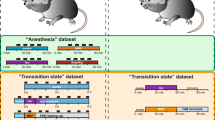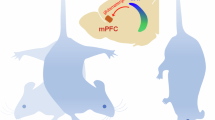Abstract
Aim:
3-Methyl-6-chloro-7,8-hydroxy-1-(3-methylphenyl)-2,3,4,5-tetrahydro-1H-3-benzazepine (SKF83959) have been shown to affect several types of voltage-dependent channels in hippocampal pyramidal neurons. The aim of this study was to determine how modulation of a individual type of the channels by SKF83959 contributes to the overall excitability of CA1 pyramidal neurons during either direct current injections or synaptic activation.
Methods:
Rat hippocampal slices were prepared. The kinetics of voltage-dependent Na+ channels and neuronal excitability and depolarization block in CA1 pyramidal neurons were examined using whole-cell recording. A realistic mathematical model of hippocampal CA1 pyramidal neuron was used to simulate the effects of SKF83959 on neuronal excitability.
Results:
SKF83959 (50 μmol/L) shifted the inactivation curve of Na+ current by 10.3 mV but had no effect on the activation curve in CA1 pyramidal neurons. The effects of SKF83959 on passive membrane properties, including a decreased input resistance and depolarized resting potential, predicted by our simulations were in agreement with the experimental data. The simulations showed that decreased excitability of the soma by SKF83959 (examined with current injection at the soma) was only observed when the membrane potential was compensated to the control levels, whereas the decreased dendritic excitability (examined with current injection at the dendrite) was found even without membrane potential compensation, which led to a decreased number of action potentials initiated at the soma. Moreover, SKF83959 significantly facilitated depolarization block in CA1 pyramidal neurons. SKF83959 decreased EPSP temporal summation and, of physiologically greater relevance, the synaptic-driven firing frequency.
Conclusion:
SKF83959 decreased the excitability of CA1 pyramidal neurons even though the drug caused the membrane potential depolarization. The results may reveal a partial mechanism for the drug's anti-Parkinsonian effects and may also suggest that SKF83959 has a potential antiepileptic effect.
Similar content being viewed by others
Log in or create a free account to read this content
Gain free access to this article, as well as selected content from this journal and more on nature.com
or
References
Jin LQ, Goswami S, Cai G, Zhen X, Friedman E . SKF83959 selectively regulates phosphatidylinositol-linked D1 dopamine receptors in rat brain. J Neurochem 2003; 85: 378–86.
Panchalingam S, Undie AS . SKF83959 exhibits biochemical agonism by stimulating [35S]GTP gamma S binding and phosphoinositide hydrolysis in rat and monkey brain. Neuropharmacology 2001; 40: 826–37.
Arnt J, Hyttel J, Sanchez C . Partial and full dopamine D1 receptor agonists in mice and rats: relation between behavioural effects and stimulation of adenylate cyclase activity in vitro. Eur J Pharmacol 1992; 213: 259–67.
Fang X, Guo L, Jia J, Jin GZ, Zhao B, Zheng YY, et al. SKF83959 is a novel triple reuptake inhibitor that elicits anti-depressant activity. Acta Pharmacol Sin 2013; 34: 1149–55.
Gnanalingham KK, Erol DD, Hunter AJ, Smith LA, Jenner P, Marsden CD . Differential anti-parkinsonian effects of benzazepine D1 dopamine agonists with varying efficacies in the MPTP-treated common marmoset. Psychopharmacology (Berl) 1995; 117: 275–86.
Zhen X, Goswami S, Friedman E . The role of the phosphatidyinositol-linked D1 dopamine receptor in the pharmacology of SKF83959. Pharmacol Biochem Behav 2005; 80: 597–601.
Andringa G, Stoof JC, Cools AR . Sub-chronic administration of the dopamine D-1 antagonist SKF 83959 in bilaterally MPTP-treated rhesus monkeys: stable therapeutic effects and wearing-off dyskinesia. Psychopharmacology 1999; 146: 328–34.
Zhang H, Ma L, Wang F, Chen J, Zhen X . Chronic SKF83959 induced less severe dyskinesia and attenuated L-DOPA-induced dyskinesia in 6-OHDA-lesioned rat model of Parkinson's disease. Neuropharmacology 2007; 53: 125–33.
Guo L, Zhao JH, Jin GZ, Zhao B, Wang GH, Zhang A, et al. SKF83959 is a potent allosteric modulator of sigma-1 receptor. Mol Pharmacol 2013; 83: 577–86.
Yu Y, Wang JR, Sun PH, Guo Y, Zhang ZJ, Jin GZ, et al. Neuroprotective effects of atypical D1 receptor agonist SKF83959 are mediated via D1 receptor-dependent inhibition of glycogen synthase kinase-3 beta and a receptor-independent anti-oxidative action. J Neurochem 2008; 104: 946–56.
Shah MM, Anderson AE, Leung V, Lin XD, Johnston D . Seizure-induced plasticity of h channels in entorhinal cortical layer III pyramidal neurons. Neuron 2004; 44: 495–508.
Chen MT, Morales M, Woodward DJ, Hoffer BJ, Janak PH . In vivo extracellular recording of striatal neurons in the awake rat following unilateral 6-hydroxydopamine lesions. Exp Neurol 2001; 171: 72–83.
Schultz W, Ungerstedt U . Short-term increase and long-term reversion of striatal cell activity after degeneration of the nigrostriatal dopamine system. Exp Brain Res 1978; 33: 159–71.
Kish LJ, Palmer MR, Gerhardt GA . Multiple single-unit recordings in the striatum of freely moving animals: effects of apomorphine and D-amphetamine in normal and unilateral 6-hydroxydopamine-lesioned rats. Brain Res 1999; 833: 58–70.
Chu HY, Gu QH, Jin GZ, Hu GY, Zhen XC . Electrophysiological effects of SKF83959 on hippocampal CA1 pyramidal neurons: potential mechanisms for the drug's neuroprotective effects. Plos One 2010; 5: pii: e13118. doi: 10.1371/journal.pone.0013118.
Chen XQ, Zhang J, Neumeyer JL, Jin GZ, Hu GY, Zhang A, et al. Arylbenzazepines are potent modulators for the delayed rectifier K+ channel: a potential mechanism for their neuroprotective effects. Plos One 2009; 4: e5811.
Chu HY, Wu QQ, Zhou SL, Cao XH, Zhang A, Jin GZ, et al. SKF83959 suppresses excitatory synaptic transmission in rat hippocampus via a dopamine receptor-independent mechanism. J Neurosci Res 2011; 89: 1259–66.
Martina M, Jonas P . Functional differences in Na+ channel gating between fast-spiking interneurones and principal neurones of rat hippocampus. J Physiol (London) 1997; 505: 593–603.
Raman IM, Bean BP . Resurgent sodium current and action potential formation in dissociated cerebellar Purkinje neurons. J Neurosci 1997; 17: 4517–26.
Stuart G, Spruston N, Sakmann B, Hausser M . Action potential initiation and backpropagation in neurons of the mammalian CNS. Trends Neurosci 1997; 20: 125–31.
Du J, Haak LL, Phillips-Tansey E, Russell JT, McBain CJ . Frequency-dependent regulation of rat hippocampal somato-dendritic excitability by the K+ channel subunit Kv2.1. J Physiol 2000; 522: 19–31.
Kang J, Huguenard JR, Prince DA . Voltage-gated potassium channels activated during action potentials in layer V neocortical pyramidal neurons. J Neurophysiol 2000; 83: 70–80.
Malin SA, Nerbonne JM . Delayed rectifier K+ currents, I–K, are encoded by Kv2 alpha-subunits and regulate tonic firing in mammalian sympathetic neurons. J Neurosci 2002; 22: 10094–105.
Mohapatra DP, Misonou H, Pan SJ, Held JE, Surmeier DJ, Trimmer JS . Regulation of intrinsic excitability in hippocampal neurons by activity-dependent modulation of the K(V)2.1 potassium channel. Channels 2009; 3: 46–56.
Bean BP . Inhibition by an excitatory conductance: a paradox explained. Nat Neurosci 2009; 12: 530–2.
Kase D, Imoto K . The role of HCN channels on membrane excitability in the nervous system. J Signal Transduct 2012; 2012: 619747.
Wahl-Schott C, Biel M . HCN channels: structure, cellular regulation and physiological function. Cell Mol Life Sci 2009; 66: 470–94.
George MS, Abbott LF, Siegelbaum SA . HCN hyperpolarization-activated cation channels inhibit EPSPs by interactions with M-type K+ channels. Nat Neurosci 2009; 12: 577–84.
Magee JC . Dendritic I–h normalizes temporal summation in hippocampal CA1 neurons. Nat Neurosci 1999; 2: 508–14.
Richards CD, Shiroyama T, Kitai ST . Electrophysiological and immunocytochemical characterization of GABA and dopamine neurons in the substantia nigra of the rat. Neuroscience 1997; 80: 545–57.
Bianchi D, Marasco A, Limongiello A, Marchetti C, Marie H, Tirozzi B, et al. On the mechanisms underlying the depolarization block in the spiking dynamics of CA1 pyramidal neurons. J Comput Neurosci 2012; 33: 207–25.
McCormick DA, Contreras D . On the cellular and network bases of epileptic seizures. Annu Rev Physiol 2001; 63: 815–46.
Dichter MA, Ayala GF . Cellular mechanisms of epilepsy — a status-report. Science 1987; 237: 157–64.
Grace AA, Bunney BS, Moore H, Todd CL . Dopamine-cell depolarization block as a model for the therapeutic actions of antipsychotic drugs. Trends Neurosci 1997; 20: 31–7.
Kuznetsova AY, Huertas MA, Kuznetsov AS, Paladini CA, Canavier CC . Regulation of firing frequency in a computational model of a midbrain dopaminergic neuron. J Comput Neurosci 2010; 28: 389–403.
Tucker KR, Huertas MA, Horn JP, Canavier CC, Levitan ES . Pacemaker Rate and depolarization block in nigral dopamine neurons: a somatic sodium channel balancing act. J Neurosci 2012; 32: 14519–31.
Poolos NP, Migliore M, Johnston D . Pharmacological upregulation of h-channels reduces the excitability of pyramidal neuron dendrites. Nat Neurosci 2002; 5: 767–74.
Gao ZB, Chen XQ, Hu GY . Inhibition of excitatory synaptic transmission by trans-resveratrol in rat hippocampus. Brain Res 2006; 1111: 41–7.
Hines ML, Carnevale NT . The NEURON simulation environment. Neural Comput 1997; 9: 1179–209.
Migliore M, Hoffman DA, Magee JC, Johnston D . Role of an A-type K+ conductance in the back-propagation of action potentials in the dendrites of hippocampal pyramidal neurons. J Comput Neurosci 1999; 7: 5–15.
Durstewitz D, Seamans JK, Sejnowski TJ . Dopamine-mediated stabilization of delay-period activity in a network model of prefrontal cortex. J Neurophysiol 2000; 83: 1733–50.
Cutsuridis V, Cobb S, Graham BP . Encoding and retrieval in a model of the hippocampal CA1 microcircuit. Hippocampus 2010; 20: 423–46.
Ferrante M, Blackwell KT, Migliore M, Ascoli GA . Computational Models of neuronal biophysics and the characterization of potential neuropharmacological targets. Curr Med Chem 2008; 15: 2456–71.
Spruston N . Pyramidal neurons: dendritic structure and synaptic integration. Nat Rev Neurosci 2008; 9: 206–21.
Park YY, Johnston D, Gray R . Slowly inactivating component of Na+ current in peri-somatic region of hippocampal CA1 pyramidal neurons. J Neurophysiol 2013; 109: 1378–90.
Armstrong CM, Gilly WF . Access resistance and space clamp problems associated with whole-cell patch clamping. Methods Enzymol 1992; 207: 100–22.
O'Sullivan GJ, Roth BL, Kinsella A, Waddington JL . SK&F 83822 distinguishes adenylyl cyclase from phospholipase C-coupled dopamine D1-like receptors: behavioural topography. Eur J Pharmacol 2004; 486: 273–80.
Seeman P, Vantol HHM . Dopamine-receptor pharmacology. Trends Pharmacol Sci 1994; 15: 264–70.
Sibley DR, Leff SE, Creese I . Interactions of novel dopaminergic ligands with D-1 and D-2 dopamine-receptors. Life Sci 1982; 31: 637–45.
Yu SP, Farhangrazi ZS, Ying HS, Yeh CH, Choi DW . Enhancement of outward potassium current may participate in beta-amyloid peptide-induced cortical neuronal death. Neurobiol Disease 1998; 5: 81–8.
Pal S, Hartnett KA, Nerbonne JM, Levitan ES, Aizenman E . Mediation of neuronal apoptosis by Kv2.1-encoded potassium channels. J Neurosci 2003; 23: 4798–802.
Ayala GF, Dichter M, Gumnit RJ, Matsumot H, Spencer WA . Genesis of epileptic interictal spikes — new knowledge of cortical feedback-systems suggests a neurophysiological explanation of brief paroxysms. Brain Res 1973; 52: 1–17.
Czapinski P, Blaszczyk B, Czuczwar SJ . Mechanisms of action of antiepileptic drugs. Curr Top Med Chem 2005; 5: 3–14.
Poolos NP . HCN channelopathy in epilepsy. Epilepsia 2010; 51 (Suppl 5): 12.
Shah MM, Huang Z, Martinello K . HCN and K(V)7 (M-) channels as targets for epilepsy treatment. Neuropharmacology 2013; 69: 75–81.
Kuo CC, Lu L . Characterization of lamotrigine inhibition of Na+ channels in rat hippocampal neurones. Br J Pharmacol 1997; 121: 1231–8.
Acknowledgements
This work was financially supported by grants from the National Natural Science Foundation of China (81130023, 31373382, and 31271143) and the National Basic Research Plan (973) of the Ministry of Science and Technology of China (2011CB5C4403). We are also grateful for support from the Priority Academic Program Development of Jiangsu Higher Education Institutes (PAPD).
Author information
Authors and Affiliations
Corresponding authors
Rights and permissions
About this article
Cite this article
Zhou, Sl., Chu, Hy., Jin, Gz. et al. Effects of SKF83959 on the excitability of hippocampal CA1 pyramidal neurons: a modeling study. Acta Pharmacol Sin 35, 738–751 (2014). https://doi.org/10.1038/aps.2014.23
Received:
Accepted:
Published:
Issue date:
DOI: https://doi.org/10.1038/aps.2014.23
Keywords
This article is cited by
-
Dopaminergic innervation and modulation of hippocampal networks
Cell and Tissue Research (2018)



